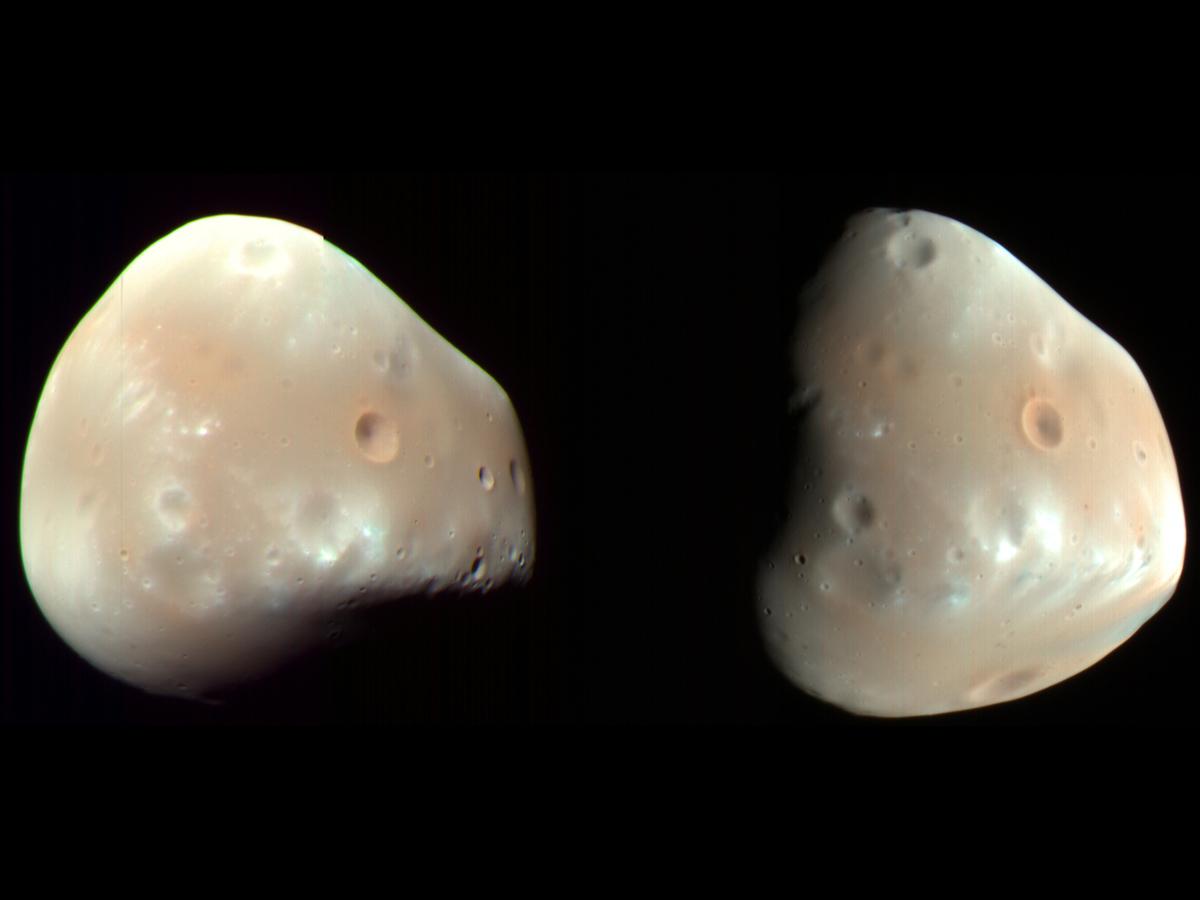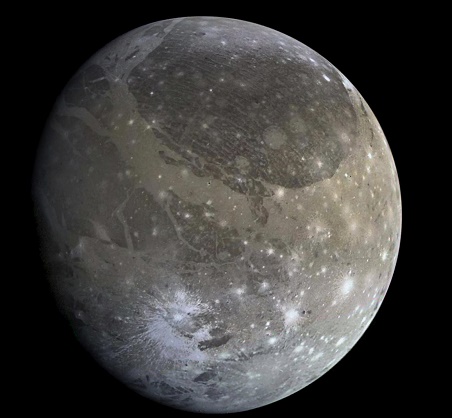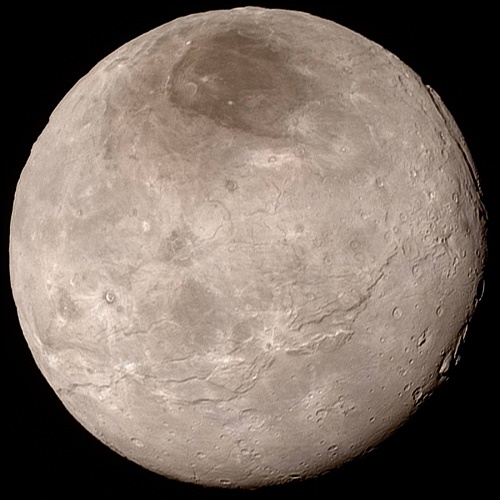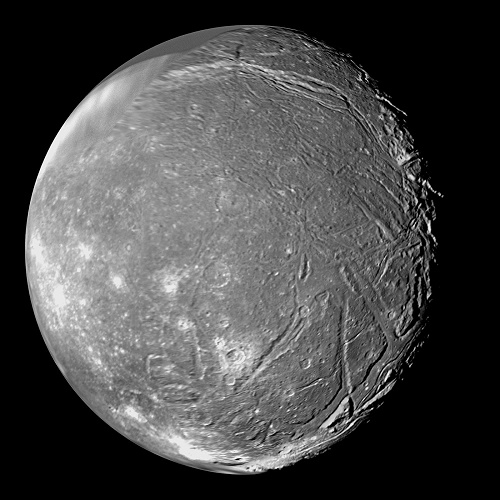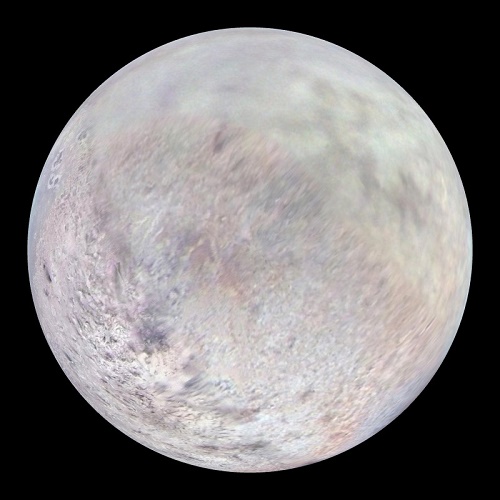Moon
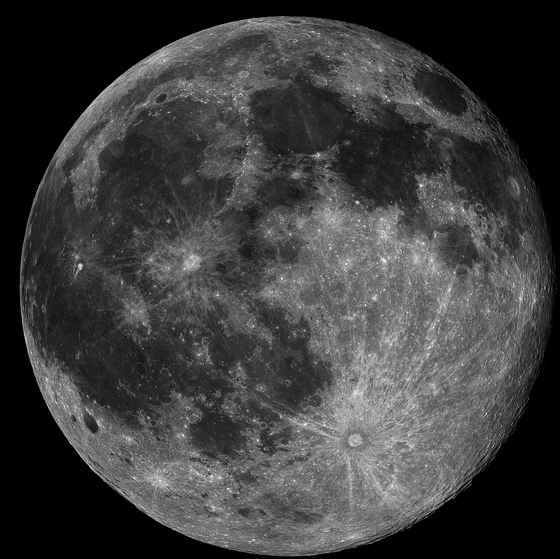
The Moon is earth’s only natural satellite. It is a heavenly, lifeless body which orbits around our planet, whilst accompanying Earth on its journey around the Sun. It shines in the sky because it reflects light from the Sun.
Its surface s composed of volcanic rock. The Moon has no atmosphere. That is why it has been repeatedly hit by meteorites which have made numerous craters on its surface.
The Moon is in synchronous rotation with Earth, always showing the same face, with its near side marked by dark volcanic maria. It is the second-brightest regularly visible celestial object in Earth's sky after the Sun, as measured by illuminance on Earth's surface.
Its surface is actually dark although it can appear a very bright white. Its prominence in the sky and its regular cycle of phases have made the Moon an important cultural influence since ancient times on language, calendars, art, and mythology.
The age of the Moon
It is estimated that the Moon is about 4.5 billion years old. It is widely believed that the Moon was formed from a chip of the Earth which broke away when our planet was by a huge heavenly body before it solidified completely.
Seas on the Moon
When the Moon was first observed through telescopes, astronomers believed that the dark areas on the Moon’s surface were seas. In fact, the ‘seas’ are vast plains of lava on the beds of gigantic meteorite craters.
Moon’s effect on Earth’s Seas
The rise and fall in the level of the sea i:e high and low tides are due to the force of gravity of the Moon. The Moon, like a huge magnet, attracts liquid masses in the Earth’s hemisphere which is turned towards it, causing high tides. This event happens twice each day, approximately every 12 hours and 25 minutes.

Moon Facts
- On average, the moon is 384,600Km distant from the Earth. Because its orbit is elliptic, sometimes it is nearer, sometimes further from Earth.
- The Moon’s diameter is a quarter of Earth’s diameter – 3475.6Km.
- The average temperature on the moon goes from 100°C by day to minus 150°C by night.
- The hemisphere visible on the Moon is so vast that it could contain the whole of Europe.
Other Moons
Planets in the solar system have different number of Moons.
Mars has 2. Jupiter has 16. Saturn has 18. Uranus has 15. Neptune 8. Pluto 1.
Mars’ two moons are very small 16km and 18km in diameter.
Jupiter’s largest moons are Ganymede, Callisto, Io and Europa, all discovered in 1610 by Galileo Galilei. Scientists think there may be water in a liquid state on Europa.
One of the Saturn’s moons Titan has an atmosphere of nitrogen and methane, which may suggest the presence of elementary forms of life.
Charon, Pluto’s only known moon is half the size of the planet. Triton, Neptune’s largest moon is the coldest place in the Solar System.
Miranda, one of the Uranus’ Moon has a very irregular surface, with plains, craters and canyons.
